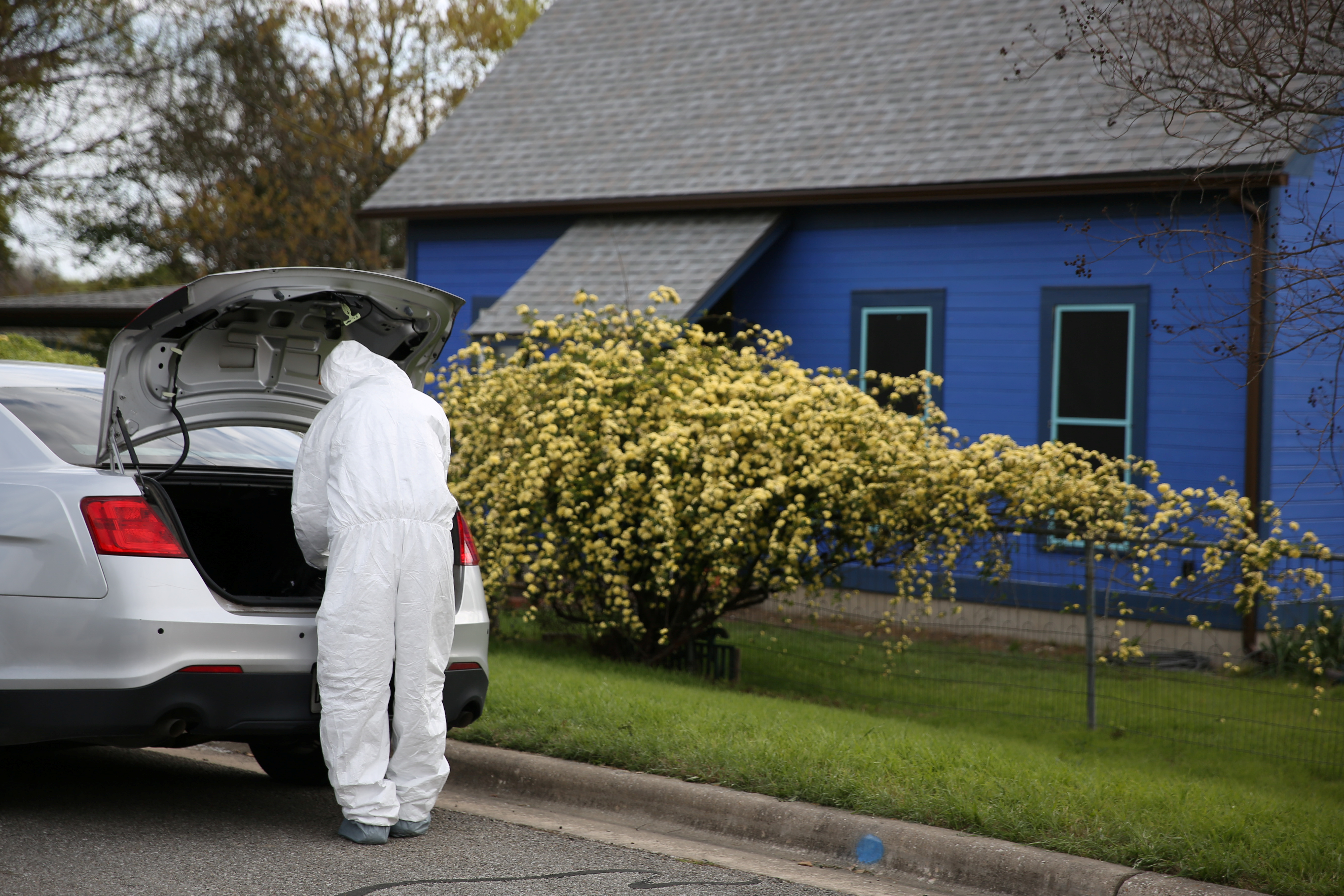
By Zachary Fagenson and Bernie Woodall
PLANTATION, Fla. (Reuters) – FBI agents used DNA and a fingerprint to identify the Florida man suspected of sending at least 14 parcel bombs to critics of U.S. President Donald Trump days ahead of congressional elections.
Cesar Sayoc has been charged with five federal crimes including threats against former presidents and faces up to 58 years in prison if found guilty, U.S. Attorney General Jeff Sessions said at a news conference.
“We will not tolerate such lawlessness, especially political violence,” he said.
FBI agents arrested Sayoc, 56, in Plantation, Florida and also hauled away a white van plastered with pro-Trump stickers, the slogan “CNN SUCKS” and images of Democratic figures with red crosshairs over their faces.

A law enforcement officer checks a van which was seized during an investigation into a series of parcel bombs, in Plantation, Florida October 26, 2018 in a still image fro video. WPLG/Handout via REUTERS
FBI Director Christopher Wray told the news conference that fingerprints on a package sent to Representative Maxine Waters belonged to Sayoc.
He also said there could be other packages.
Announcing the arrest by the Federal Bureau of Investigation to a cheering audience at the White House, Trump said such “terrorizing acts” were despicable and had no place in the United States.
“We must never allow political violence to take root in America – cannot let it happen,” Trump said. “And I’m committed to doing everything in my power as president to stop it and to stop it now.”
Sayoc’s home address was listed in public records as an upscale gated apartment complex in the seaside town of Aventura, Florida.
According to the records, he is a registered Republican with a lengthy criminal past – including once making a bomb threat – and a history of posting inflammatory broadsides on social media against Trump’s political foes.
Sayoc was being held at an FBI processing center in Miramar, Florida, CNN said. He was expected to be taken to the Federal Detention Center in downtown Miami and will likely make his first appearance before a judge on Monday, according to former Assistant U.S. Attorney David Weinstein.

Police respond to a report of a suspicious package in the Manhattan borough of New York, New York, U.S., October 26, 2018. REUTERS/Mike Segar
A federal law enforcement source said charges would likely be brought by federal prosecutors in Manhattan and Sayoc transferred to New York City.
(Reporting by Zachary Fagenson and Bernie Woodall; Additional reporting by Gina Cherelus, Gabriella Borter and Peter Szekely in New York, Mark Hosenball, Makini Brice, Susan Heavey, Sarah N. Lynch in Washington, and Brendan O’Brien in Milwaukee; Writing by Bill Tarrant; Editing by Lisa Shumaker and Cynthia Osterman)






